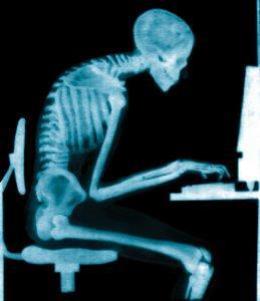Businesses are now offering Massage Therapy.
The Corporate World - More Businesses are Offering Massage Therapy as an Employee Benefit.
- Corporate chair massage has quickly become one of the most popular and requested benefits in the workplace today.
- A chair massage program demonstrates an employer's proactive commitment to the health and well being of their employees.
- Chair massage will recharge your daily routine and make any event unique and memorable.
- Everybody wins with chair massage.
- HaveChairWillTravel will pay for itself in productivity and a more positive working environment.
- Chair massage has many demonstrated therapeutic benefits.
- Chair massage is a fabulous way to promote stress management. A way to keep employees happy, healthy and productive.
- HaveChairWillTravel will pay for itself in productivity and a more positive working environment.
Massage goes Corporate.
Boeing features an “Industrial Athlete Program” that offers massage to help improve employees’ physical and mental resilience.
Eddie Bauer offers massage as part of a wellness program that includes mammograms, a wellness room and a personal trainer at the company’s on-site gym. Google has its own “Massage Program Manager,” who boasts on a YouTube video that the company has “massage going in multiple massage rooms eight hours a day, five days a week.”
https://www.youtube.com/watch?v=KZASRmfUMOk
Massage has not only gone mainstream—it’s gone corporate. Companies big and small have discovered the benefits of wellness in the workplace and they are using massage as a way to attract and keep employees, while also keeping them productive.
Massage has not only gone mainstream—it’s gone corporate. Companies big and small have discovered the benefits of wellness in the workplace and they are using massage as a way to attract and keep employees, while also keeping them productive.
Growing Need.

There is currently no data available on the number or percentage of companies that offer massage therapy as a benefit. Some industry experts, however, say they think the numbers are growing. “It has been looked upon in a much more favorable way,” says Burt Abrams of B.J. Abrams & Associates, an executive recruiting firm in suburban Chicago.
“Only in the last five to eight years has massage started to get some notice.” Abrams has offered his employees chair massage over the past several years. “It is a benefit for stress relief, and it feels good,” he says. “It is a benefit that does not cost a whole lot of money, and it gets a lot of good will from your employees.”
Research on corporate massage is so scarce that massage therapists widely rely on a 1992 article in the Financial Times to trumpet the benefits that companies can reap by offering massage therapy to employees.
The article claims a company based in Ontario, Canada, reported a 25 percent decrease in time off for work-related injuries, and a $200,000 decrease in compensation claims after it implemented a Massage Therapy program. John Hasmonek can relate. Hasmonek is a Certified Public Accountant and partner at Ronald J. Borden & Company, a Chicago-based accounting firm that offers employees monthly on-site massage therapy. The company began offering the benefit about a decade ago in response to extremely long work hours during certain parts of the year, especially tax time.
“Our people get tired,” explains Hasmonek. “So, we decided to offer them a massage in the office once a month in order to give them a little break to see if it would increase their energy levels. And it has. It has increased their morale even more than we anticipated.
People really look forward to that monthly massage. " Debbie Jordan, an Administrative Assistant at the firm, speaks highly of the program. “We brag about it,” she says. “I will go to the health club, and tell friends that the massage people are coming Monday. They can’t believe it. They’re very jealous. They say ‘that’s a nice perk you have from your employer.’”
The Colorado Health Institute in Denver began discussing a wellness plan to combat employee stress and heavy workloads about two years ago. The organization implemented on-site massage as part of a program that included yoga and “two o’clock walks” involving voluntary 20-minute walks on and around the organization’s grounds. “People were really getting stressed out,” says Michele Christiansen, the Institute’s Operations Manager. “We could not change the workload. What we could do is help people manage the stress of the workload.” Christiansen believes the organization’s wellness program and massage therapy has made a difference in employee morale as well. “Employees are more productive and happier if you help them manage their stress,” she adds.
Tallying the Cost
The Colorado Health Institute offers an on-site massage therapist once every four weeks. The company posts a sign-up sheet in advance for employees to reserve 20-minute blocks with the therapist.
Employee contributions for massage benefits vary from company to company. Sometimes the company pays all of the costs, and sometimes the employees and company share the costs. Sometimes, too, the employees pay the entire cost of the massage. In fact, many employers say their employees are happy to be given the time to get a massage during work hours, especially since they might not take the time out otherwise.
Then there are companies like Google that pull out all the stops. The company boasts approximately 35 massage therapists in the United States and looks to add more. “The goal is to triple the number of massages we give each week,” declares Google Massage Program Manager Babette Villasenor. “We have Chair Massage and table Massage, Pre-natal Massage and Thai massage,” Villasenor continues on the video. “The most common feedback that I get from Googlers is that Google massage has ruined their experience of massage outside of Google—you literally have to work here to get a massage this good.” The Google video underscores the extent to which companies, and employees, are embracing massage.
Some therapists employ a tiered pricing system where they charge the company $60 per hour as a base and will adjust the rate depending on how much time they spend giving massages. Under this pricing system, the company is charged a higher rate, perhaps $70 per hour, if the therapist spends fewer than, say, three or four hours at the company.
 Enjoying the Benefits
Enjoying the BenefitsSuburban Chicago law firm Kovitz Shifrin Nesbit treats employees to a free 20-minute chair massage once every two months. Therapists are on-site once every two weeks, and employees can pay for a 20-minute massage on the weeks that they’re not due for a company paid massage. The company covers gratuity, explains firm administrator Ivie Cohn. “It’s something that we sometimes share in an interview with potential employees,” Cohn says. “It definitely speaks to our culture and our environment.”
At the Colorado Health Institute, Kathy Helm sits at a computer all day. She said one of the benefits of a Massage is that it reveals problems that she did not realize existed. “You go in and get the massage, and you’ve got this problem and this problem and this knot,” Helm says. “Once you get it worked out, you’re able to do things better. You don’t have that tension.”
Jordan states she has an immediate sense of relaxation from being in the chair and listening to the music played by the on-site massage therapist. “You immediately feel the stress level drop,” she explains. “After you’re in the chair, the therapist will ask what areas need particular attention.” Often, she will have the therapist work on her shoulders, which are painfully tight from spending so much time in front of the computer. “she will massage my arms and go down to each finger,” that in itself relieves the majority of my stress and tension, leaving me with a feeling of total relaxation"


